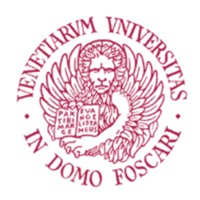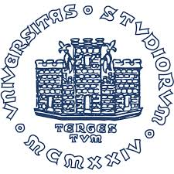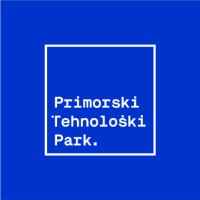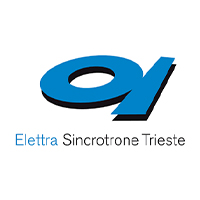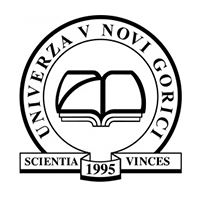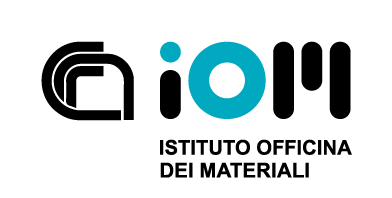questo è il portale di Nanoregion, un progetto dell'interreg Italia-Slovenija
leggi di più


Sei in cerca di una soluzione per il tuo processo produttivo? Hai un problema che non sai risolvere? Cerchi nuove idee? Entra in NanoRegion e registrati sul nostro portale: abbiamo una risposta nanotecnologica alle tue esigenze.

Ora inizia un dialogo con gli esperti di NanoRegion. Puoi visitare le strutture della rete o invitare un esperto nel tuo stabilimento. Troverai centri di ricerca e laboratori nanotecnologici avanzati. E potrai dialogare con un consulente NanoRegion alla ricerca di nuove soluzioni.

I ricercatori di NanoRegion sono a disposizione per individuare, insieme, una soluzione alle tue esigenze produttive. Ti assisteranno nella scrittura di un proposal per mettere in luce problemi e implementare strategie.

Infine la rete individua per te gli esperti più adatti con i quali raggiungere l'obiettivo. Il portale ha diversi livelli per lo scambio di contenuti e consente di identificare strumentazioni e strutture, e di portare a termine metodi e processi. Small we can!
The X-ray scanner is an exposure station designed for deep-etch X-ray lithography using synchrotron radiation to fabricate structures in X-ray sensitive polymers (resists) like PMMA. Shadow projection is used to transfer the absorber structures of a mask membrane into a light sensitive resist layer coated on a base plate.Microstructures can be fabricated with high spatial resolution (200 nm for a wall thickness of 100um) High aspect ratio (up to 40) Great structural heights (up to 3mm). To enable the defined selection of an exposure area, motor-driven aperture blades have been installed in horizontal and vertical direction. DEX02 featured a fully automatic exposure procedure, Scanning speed 1:50 mm/sec. 4” Mask and resist substrate. Resist Material: PMMA, SU8. Set of 5 filters. Exposure Area A=54 mm x 84mm
The use of the instrument require the presence of a trained operator. For prolonged access, training can be provided upon agreement.
Elettra Sincrotrone Trieste
c/o Area Science Park - Basovizza
Strada Statale 14 km 163,5 - 34149 Trieste Italy
DXRL Beamline
Alessio Turchet & Benedetta Marmiroli (TU Graz)
Elettra +39-0403758630
The UV -KUB 3 is a mask aligner designed for laboratories and technological platforms in microelectronics, optics, biology, microfluidics. This UV station features a fully enclosed system ensuring a total user protection against UV rays with an hermetic exposure chamber. Intuitive tactile user interface.Low divergence, strong illumination monochromatic wave lenght.Accepted photomask size 5”x5” (127x127 mm maximum).Accepted substrate size 2” and 4”. Visualization system resolution 3um. Mask/substrate distance resolution 0.5 um. Exposure mode available continue/pulsed.Half angle divergence beam:< 2º.Wavelenght:365 nm.Illumination:35mW/cm^2. The UV station is equipped with a WS-650MZ-23NPPB Spin Coater anda a hot plate
The use of the instrument require the presence of a trained operator. For prolonged access, training can be provided upon agreement
Elettra Sincrotrone Trieste,
c/o Area Science Park - Basovizza
Strada Statale 14 km 163,5 - 34149 Trieste Italy
DXRL Beamline
Alessio Turchet & Benedetta Marmiroli (TU Graz)
Elettra +39-0403758630
mailto:alessio.turchet@elettra.eu
benedetta.marmiroli@elettra.eu
Plasma system currently working with O2 (Oxygen). The system is indicated for resist residual layer removing and surface cleaning . The system has an aluminum reaction chamber.
The use of the instrument require the presence of a trained operator. For prolonged access, training can be provided upon agreement.
Elettra Sincrotrone Trieste,
c/o Area Science Park - Basovizza
Strada Statale 14 km 163,5 - 34149 Trieste Italy
DXRL Beamline
Alessio Turchet & Benedetta Marmiroli (TU Graz)
Elettra +39-0403758630
Soft X-ray microscopy has already been recognized to be a very powerful tool for understanding the complex processes occurring at the submicron length scales. TwinMic soft X-ray microscope of the Elettra Laboratory can provide absorption and differential phase contrast imaging, with spatial resolution from a few micrometers down to 100nm, coupled with low energy X-ray Fluorescence (LEXRF) for elemental mapping of light elements, starting from B and covering the K and L edges of all elements in the energy range 190 to 2200 eV.
The use of the instrument require the presence of a trained operator.
Elettra Sincrotrone Trieste,
c/o Area Science Park - Basovizza
Strada Statale 14 km 163,5 - 34149 Trieste Italy
TwinMic Beamline
Alessandra Gianoncelli
Elettra +39-0403758753
Small Angle X-ray Scattering (SAXS) is a non-destructive method to study the nanoscale structure of any type of material ranging from new composite nanosystems to biological macromolecules. Parameters as (i) averaged particle sizes, shapes and distributions, (ii) the materials' porosity and degree of crystallinity as well as (iii) electron density maps with nanometer precision can be obtained. Materials can be solid, liquid or even exhibit gaseous-like properties as for instance aerosols.
Time-resolved studies on structural transitions can be performed in different time scales down to the sub-millisecond time region in solutions and partly ordered systems containing structures of up to 100 nm in real-space. Also self-assembly processes on surfaces, or structural characterisations of thin films, can be studied.
SAXS measurements can be performed with many different sample environments (i.e. autosampler, flow through cell, humidity cell etc). Simultenously to SAXS, also Differential Scanning Calorimetry (DSC) and Wide Angle X-ray Scattering (WAXS) recordings can be done. Users have the possibility to use our various sample holders (e.g., rapid mixing; T-scans; pressure cell, …), or to install their own specialized sample equipment.
The use of the beamline requires the presence of a trained operator. For prolonged access, training can be provided upon agreement.
Elettra Sincrotrone Trieste,
c/o Area Science Park - Basovizza
Strada Statale 14 km 163,5 - 34149 Trieste, Italy
Dr. Sigrid Bernstorff (Elettra) & Heinz Amenitsch (TU Graz)
Elettra +39-0403758572 & +39-0403758044
Cross Beam Zeiss including high resolution SEM and focused ion beam column (FIB). Hgh resolution imaging even at low energies, nano-milling, Electron Beam and Ga ion beam lithography system. As Scanning Electron Microscope (SEM) it has an ultimate resolution of 1 nanometer. The operating voltage range of the electron beam is from 0.7-30kV, and the probe current (10pA - 5nA) with high stability (0.2%/h). The ion beam probe voltage is set to 30 keV and the current range is 1pA – 500nA. Key features of this microscope are the in-column secondary electron detector that provides low-noise imaging during FIB material removal as well as imaging at very low voltages. EDS included in the instrument (EDAX LN cooled)
The use of the instrument require the presence of a trained operator. For prolonged access, training can be provided upon agreement.
CNR-IOM - Istituto Officina dei Materiali,
c/o Area Science Park - Basovizza
Strada Statale 14 km 163,5 - 34149 Trieste
Cleanroom 2
Simone Dal Zilio
IOM-CNR | +39-0403756458
The SC7620 is designed for quality thin film deposition from an easy-to-use instrument. Designed for routine applications, the SC7620 uses a basic magnetron sputter head with a simple-to-replace disc target (gold/palladium as standard). The sputtering allows easy operation for extremely thin and uniform conductive film.
Notes: The use of the instrument doesn’t require the precence of a trained operator.LOCATION
CNR-IOM - Istituto Officina dei Materiali,
c/o Area Science Park - Basovizza
Strada Statale 14 km 163,5 - 34149 Trieste
Cleanroom 2
Simone Dal Zilio
IOM-CNR | +39-0403756458
RIE (Reactive Ion Etching) configured with several process gasses including SF6 (Sulfur Hexafluoride), CF4 (tetrafluorometane), O2 (Oxygen), and Ar (Argon). The system is indicated for dry etching of Si, SiO2, Si3N4, resist residual layer removing, Ar milling and surface activation by O2 plasma. The RIE has an Alluminum reaction chamber, suitable for long etching processes.
The use of the instrument require the presence of a trained operator. For prolonged access, training can be provided upon agreement.
CNR-IOM - Istituto Officina dei Materiali,
c/o Area Science Park - Basovizza
Strada Statale 14 km 163,5 - 34149 Trieste
Cleanroom 2
Simone Dal Zilio
IOM-CNR | +39-0403756458
The JEM 2100F is a field emission TEM with beam energy ranging 80-200 KeV. The nominal resolution is 0.1 nm, and atomic resolution is ordinarily achieved. The image acquisition is routed by means of Orius 1000 CCD camera (Gatan). It is possible to work in STEM mode (resolution 0.2 nm) with bright field and annular dark-field detectors. The system is equipped with an EDX detector (X-Max80t, Oxford) with Aztech acquisition and analysis software.
The use of the instrument requires the presence of a trained operator.
Univerza v Novi Gorici, Materials Research Laboratory (ground floor)
Vipavska 11c, SI-5270 Ajdovščina, Slovenija
Mattia Fanetti
UNG | Tel: +386 5 3653 532
The JSM 7100F is a field emission scanning electron microscope. The beam energy ranges from 1 to 30 KeV (beam energies lower than 1 KeV can also be accessed by Gentle Beam technology). In standard conditions a resolution <5 nm is achieved, while the best nominal resolution is 1.5 nm at 30 KeV. The microscope is equipped with secondary electon detector, backscattered electron detector, and trough-the-lens (TTL) energy-filtered detector. Attached equipment:
The use of the instrument requires the presence of a trained operator. For prolonged access, training can be provided upon agreement.
Univerza v Novi Gorici, Materials Research Laboratory (ground floor)
Vipavska 11c, SI-5270 Ajdovščina, Slovenija
Mattia Fanetti
UNG | Tel: +386 5 3653 532
PECS is an apparatus to easily produce thin films and coatings on specimens. Several materials are available (C, Ag, Au/Pd, Pt, Cr, Ni). Typical deposition rate, which is measured in situ by quartz microbalance is from 0.2 to 1 Å/s. The deposition is stopped automatically at the set thickness. The sample can be rotated and rocked during deposition. An Ar+ etching gun is also present in the same system, with energy 1-10 KeV.
The use of the instrument requires the presence of an experienced operator. Access is allowed for external users (compatibly with internal use) which are experienced in the use of the instrument. Support can be provided at the beginning.
Univerza v Novi Gorici, Materials Research Laboratory (ground floor)
Vipavska 11c, SI-5270 Ajdovščina, Slovenija
Mojca Vrčon
UNG | Tel: +386 5 3653 540
Several instruments for sample preparation: diamond wire saw (Well), ultrasonic disc cutter (Gatan), dimple grinder (Gatan), manual disc grinder (Gatan), rotating grinding/polishing machine, precision ion-polishing system (PIPS, Gatan). The latter is polishing with Ar+ ion beam (1-5 KeV) at grazing incidence, and is used to open a hole at the center of 3 mm disc TEM specimens.
The use of the instruments requires the presence of an experienced operator. Access is allowed for external users (compatibly with internal use) which are experienced in the use of the instruments. Support can be provided at the beginning.
Univerza v Novi Gorici, Materials Research Laboratory (ground floor)
Vipavska 11c, SI-5270 Ajdovščina, Slovenija
Mattia Fanetti, Mojca Vrčon
UNG | Tel: +386 5 3653 532 / 540
The JEOL X-section polisher allows for the preparation of extemely flat X-sections of a wide variety of materials, from ceramics, to metals, to porous materials. To some extent, it can operate also on soft materials.The Ar+ ion beam energy goes from 2 to 6 KeV. The specimen is rocking during the milling.X-section 1-2 mm wide and 500 m deep can be obtained in few hours.
The use of the instrument requires the presence of a trained operator.
Univerza v Novi Gorici, Materials Research Laboratory (ground floor)
Vipavska 11c, SI-5270 Ajdovščina, Slovenija
Mattia Fanetti
UNG | Tel: +386 5 3653 532
The available facility operates in ultra high vacuum with a monochromatized Al K-alpha X-ray source at 1486.6 eV and an hemispherical electrons’ spectrometer from Scienta-Omicron. The ultimate energy resolution of the system is 400 meV. The spot size of the x-ray source can be varied from 400 to 950 microns. The sample is mounted on a cryogenic manipulator with controllable temperature in the range (350-20)K.
The system also offers a fast entry and a sample preparation chamber, equipped with LEED (Low Energy Electrons Diffraction), ion sputter gun, sample heating stage up to 800 C.
The use of the facility requires the presence of a trained operator.
Univerza v Novi Gorici, Laboratory of Quantum Optics (ground floor)
Vipavska 11c, SI-5270 Ajdovščina, Slovenija
Barbara Ressel
UNG | Tel: +386 5 3653 531
TLS is highly sensitive detection system which anables to determine a wide range of substances at the level of 10-6 AU. Consists of excitation beam laser with the emission line from 400 up to over 800 nm and different powers that are chosen according to the absorption spectrum of the detected compound. It is also equipped with low power probe beam laser, mechnaical chopper, amplified detector and optical system due to which it is possible to optimize the experimental conditions.
Attached equipment:
The use of the instrument requires the presence of a trained operator. For prolonged access, training can be provided upon agreement.
Univerza v Novi Gorici, Laboratory for environmental and life sciences (2nd floor), Vipavska cesta 13, 5000 Nova Gorica
Dorota Korte
UNG | Tel: +386 5 3315 238
GC-ECD/FID is a gas chromatographer equipped with Electron Capture (ECD) and Flame Ionization (FID) detector. The instrument is also equipped with an Gerstel MPS2 autosampler and head space. With the presented instrument is possible to detect a large spectrum of volatile organic compounds, present in traces. The Gestel MPS 2 autosampler allows also the thermal desorption and extraction, which allows as to determinate ultra-trace organic compounds in aqueous and gases matrices.
The use of the instrument requires the presence of a trained operator. For prolonged access, training can be provided upon agreement.
Univerza v Novi Gorici, Laboratory for environmental and life sciences (2nd floor), Vipavska cesta 13, 5000 Nova Gorica
Dorota Korte
UNG | Tel: +386 5 3315 238
BDS is a home-made system that consists of excitation beam laser with the emission line from 400 up to over 800 nm and different powers that are chosen according to the absorption spectrum of the measured sample. It is also equipped with low power probe beam laser, electro-optical modulator (EO), quadrant photodetector and optical system due to which it is possible to optimize the experimental conditions. EO provides modulation frequency from DC to GHz and thus, have capability of sample depth profiling and separate signals arising only from the upper layers of the sample (10 nm – 100 μm, several 10 - 100 kHz modulation frequencies) from signals originating from deeper layers and the bulk sample, which we can detect by the use of lower modulation frequencies (10 – 1000 Hz). Furthermore, due to the possibility of tight focusing of the excitation laser provides high spatial resolution of measurement providing the possibility of sample surface profiling.
BDS can be applied to observe heat transfer across thin nano-layers and nano-structures which takes place on sub-nanosecond times scales.
The use of the instrument requires the presence of a trained operator. For prolonged access, training can be provided upon agreement.
Univerza v Novi Gorici, Laboratory for environmental and life sciences (2nd floor), Vipavska cesta 13, 5000 Nova Gorica
Dorota Korte
UNG | Tel: +386 5 3315 238
The EPS150-TRIAX is a versatile, highly-precise manual probe station for wafers and substrates up to 150 mm. Equipped with 4 triaxial probes on DPP210 micropositioners, triaxial chunk, it allows to measure pA currents. Probes connected to 2-channel Keysight B2912A multimeter. Dark-box enclosure for EM shielding.
The use of the instrument require the presence of a trained operator. For prolonged access, training can be provided upon agreement.
Univerza v Novi Gorici, Laboratory for Organic Matter Physics
Vipavska 11c, SI-5270 Ajdovščina, Slovenija
Egon Pavlica
UNG | Tel: +386 5 3653 513
DALI model A is a versatile lithography tool, which can be used to illuminate highly-precise patterns using laser beam of diameter of 1 and 3 μm and wavelength of 375 nm. User-friendly software is used to design patterns. Optical camera is used to position and align patterns. The tool is located in a clean-room.
The use of the instrument require the presence of a trained operator and basic training of working in clean-room. For prolonged access, training of laser lithography can be provided upon agreement.
Univerza v Novi Gorici, Laboratory for Organic Matter Physics
Vipavska 11c, SI-5270 Ajdovščina, Slovenija
Egon Pavlica
UNG | Tel: +386 5 3653 513
A100 is a versatile atomic force microscope suited to a wide variety of applications including bioscience, surface science, semiconductor technology, magnetic media, polymer science, optics, chemistry and medicine. The close loop flexure scanning stage guarantees absolute positioning and high planarity. Kelvin-probe microscopy is available with conductive probes. Typical lateral resolution is 3nm and depends on the probe tip radius. Vertical resolution is below 1nm.
The use of the instrument require the presence of a trained operator. For prolonged access, training can be provided upon agreement.
Univerza v Novi Gorici, Laboratory for Organic Matter Physics
Vipavska 11c, SI-5270 Ajdovščina, Slovenija
Egon Pavlica
UNG | Tel: +386 5 3653 513
Time-of-flight photoconductivity is an experimental method to measure charge carrier mobility in semiconducting and insulating materials. This setup is equipped with a tunable wavelength pulsed laser (NT342A). Therefore, in addition to time-resolved also the spectroscopic study of photon-to-electron conversion dynamics can be characterized. Sample preparation and characterization is performed in N2 glovebox. Optionally, the samples can be cooled to temperatures down to 15K in a closed-cycle He-cooled cryostat with quartz window and GHz feed-through connection.
The use of the instrument require the presence of a trained operator.
Univerza v Novi Gorici, Laboratory for Organic Matter Physics
Vipavska 11c, SI-5270 Ajdovščina, Slovenija
Egon Pavlica
UNG | Tel: +386 5 3653 513
Scanning Electron Microscope (SEM) has an nominal ultimate resolution of 1.3 nm at 20 kV. The operating voltage range of the electron beam is from 0.1-30kV, and the probe current (4 pA – 20 nA) with high stability (0.2%/h). It is provided by an in-lens secondary electron detector that provides low-noise imaging. The instrument has the possibility to operate in variable pressure (VP) conditions (range 10-133 Pa), with a dedicated secondary electron detector, allowing analysis of non-conductive samples without metal coating. A back-scattered detector is available and can be operated in both high vacuum and VP conditions. The instrument is equipped with an Energy Dispersive X-ray Spectrometer (EDS) Bruker Quantax 200, based on a silicon drift detector (SDD) which avoids LN2 cooling.
The use of the instrument require the presence of a trained operator. For prolonged access, training can be provided upon agreement.
UNIVE DSMN – Dipartimento di Scienze Molecolari e Nanosistemi,
c/o Edificio ETA, Campus Scientifico
via Torino, 155
30172 Venezia-Mestre, Italia
Federica Rigoni
DSMN | +39-041 234 6715
The SC7620 is designed for quality thin film deposition from an easy-to-use instrument. Designed for routine applications, the SC7620 uses a basic magnetron sputter head with a simple-to-replace disc target (gold as standard). The sputtering allows easy operation for extremely thin and uniform conductive film.
Notes: The use of the instrument doesn’t require the presence of a trained operator.
UNIVE DSMN – Dipartimento di Scienze Molecolari e Nanosistemi,
c/o Edificio ETA, Campus Scientifico
via Torino, 155
30172 Venezia-Mestre, Italia
Federica Rigoni
DSMN | +39-041 234 6715
The JEOL JEM-3010 operates up to 300 kV, it is equipped with: ultra-high resolution pole pieces which guarantee a nominal point resolution of 0.14 nm; a single-tilt sample holder; double-tilt sample holder; analytical double-tilt sample holder; LN2 cryogenic single-tilt sample holder; single-tilt sample holder for transfer in vacuum or controlled atmosphere. The coupled Energy Dispersive X-rays Spectrometer (EDS) Oxford Instruments ISIS Series 300 (LN2 cooled) has an analytical resolution of 133 eV at Mn Kα.
The use of the instrument require the presence of a trained operator. For prolonged access, training can be provided upon agreement.
UNIVE DSMN – Dipartimento di Scienze Molecolari e Nanosistemi,
c/o Edificio ETA, Campus Scientifico
via Torino, 155
30172 Venezia-Mestre, Italia
Davide Cristofori
DSMN | +39-041 234 6726
It allows to cut soft samples, e.g. polymers or biosamples, in thin slices with a 1 nm minimum nominal feed. It is possible to cut at controllable cryo temperature down to -170°C. Diamond knives for wet cryo cutting are available.
The use of the instrument require the presence of a trained operator. For prolonged access, training can be provided upon agreement.
UNIVE DSMN – Dipartimento di Scienze Molecolari e Nanosistemi,
c/o Edificio ETA, Campus Scientifico
via Torino, 155
30172 Venezia-Mestre, Italia
Davide Cristofori
DSMN | +39-041 234 6726
The Veeco Dimension 3100 atomic force microscope is an ambient AFM which utilizes standard and advanced SPM imaging modes for measuring properties of surfaces, nanomaterials, semiconductor/electronic devices, biomaterials, thin films... The sample stage will allow large sample sizes (up to a 6 inch wafer) with a scan size up to 90 µm in the X & Y and 6 µm in the Z direction.
Applications: Nanomaterials, Advanced materials, Electronic circuits, Thin films, MEMS/NEMS, Biotechnology.
Modes of operation: Contact mode, Tapping mode, Phase imaging, Lateral force mode, Force imaging, Magnetic force microscopy, Electric force microscopy, Conductive AFM, Kelvin probe force microscopy.
http://www.nanocenter.si/index.php?page=atomic-force-microscope---afm
New users have to be supervised by an experienced user. Before reservation contact responsible person. Users are obliged to use reservation system.
Equipment is accessable 24/7.
Jozef Stefan Institute
Jamova 39, Ljubljana, Slovenia
room: Laboratory B
Contact person
Damjan Svetin
+386 1 477 3553
DaLI is a desktop laser imaging system for mask-less photolithography and patterning. The system uses direct exposure with an UV diode laser beam (375 nm) to pattern materials sensitive to ultraviolet light. Standard i-line photoresists, such as SU-8, AZ, etc. can be used. Exchangeable exposure tool sizes (beam diameters) provide high precision details and speed (fine 0.8um, coarse 2.5um). The flexibility of this technology enables design changes and experimentation, which makes the DaLI perfect for R&D and prototyping. Conducting, isolating, semiconducting, transparent or opaque substrate can be used; max. lateral dimensions 100 mm x 100 mm, maximum thickness 10 mm.
DaLI is used in the field of micro-scale technology, microfluidics and optofluidics, nanotechnology, microelectronics, and enables microstructuring a variety of micro devices, such as integrated circuits, PCBs, MEMS, lab-on-a-chip, and other applications.
http://www.nanocenter.si/index.php?page=laser-lithography
Acces to the equipment is allowed to a trained user. Short trainings are provided by an experienced operators, upon agreement.
Jozef Stefan Institute
Jamova 39, Ljubljana, Slovenia
room: B106
Damjan Svetin
+386 1 477 3553
Optical ellipsometry is a non-destructive technique for investigation of surfaces, interfaces and thin films. It probes modifications of the polarization state of optical beam reflected from the sample. The system provides ellipsometric analysis with the lateral resolution of 1 μm. Optical illumination of the sample takes place via monochromatic radiation (spectrally filtered light from Xenon Arc lamp with the bandwidth of 6 - 12 nm) with tunable wavelength in the range from 365 nm (UV) to 1600 nm (NIR). Extension to the NIR region is a specialty of our system that makes it very suitable for investigations of semiconductor materials. Laser light source at λ = 658 nm can also be used for illumination and polarization analysis.
http://www.nanocenter.si/index.php?page=elipsometer-2
The use of the instrument require the presence of a trained operator. For prolonged access, training can be provided upon agreement.
Jozef Stefan Institute
Jamova 39, Ljubljana, Slovenia
room: Z1
Luka Cmok
+386 1 476 3220
Dual Beam Helios Nanolab 650 G2 (Thermofisher Scientiffic, US) consist of ultra-high resolution Elstar SEM column with UC monochromator and Tomahawk focused ion beam (FIB) column. The configuration at Nanocenter include: in-column TLD detector, ETD detector, ICE detector, retractable CBS detector (BSE), retractable STEM (BF/DF/HAADF transmission imaging); plasma cleaner; charge compensator; Pt, C and SiOx gas injection system for material deposition; Autoprobe 200 micro-manipulator (Oxford, UK) and X-MAX 50 SDD EDX system (Oxford, UK).
E-Beam: 50V – 30 kV (1.6 pA – 100 nA), resolution: 0.8 nm @ 30 kV (STEM), 0.8 nm @ 15 kV, 0.8 nm @ 2 kV, 0.9 nm @ 1 kV, 1.5 nm @ 200 V.
I-Beam: 500V – 30 kV (4 pA – 65 nA); 4.5/2.5 nm @ 30 kV (PS/SE, method).
Instrument is used for cross-sectional analysis, nano-pattering, TEM sample preparation, 3D tomography and deposition of thin conductive or dielectric films via ion-beam induced deposition.
http://www.nanocenter.si/index.php?page=focused-ion-beam---fib
The use of the instrument require the presence of a trained operator. For prolonged access, training can be provided upon agreement.
Jozef Stefan Institute
Jamova 39, Ljubljana, Slovenia
room: Building B, basement
Gregor Kapun
+386 1 477 3220




